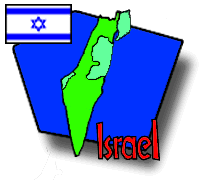

(25/4/98) The Jordan River is first and foremost a significant boundary. It's a natural dividing line between East and West of the Jordan Valley. It's always been a political dividing line between nations like the Amonites, Moabites and Edomites, on the eastern side of the Jordan and the Land of Israel on the Western.
Today it's the border between the Kingdom of Jordan and Israel. In ancient times it was a symbolical spiritual dividing line between Paganism and the belief in G-d.
Abraham crossed over the Jordan R. and became the first Hebrew, a word which means "the one who crossed over" Referring to one who crossed over from Paganism to the belief in one G-d. From then on Hebrews were people distinguished by two main characteristics:
Crossing over the Jordan River was like crossing over the threshold into one's home. A man might leave his home but will always return. The Hebrews left their land several times in their history but they always returned.
Abraham went to Egypt because there was famine in the land. Father Jacob left to escape quarreling with Esau only to return 21 years later.
Nebuchadnezer forced the Jews to leave and took them to Babylon, but they returned 75 years later under Nehemia.
The point of return, both in the days of Father Jacob and under Nehemia, was the Jordan River. The first town Jacob entered on the Western side of the Jordan was the town of Succot; the first town Nehemia entered was Bet Shean. Nehemia, however, compared himself to Father Jacob and so named Bet Shean Succot. Later the Romans changed this to Scytopolis, a Romanised version of Succot.
The town of Succot (Bet Shean) became the boundary of the Holy Land. The Rabbis of the Mishna and the Talmud laid down a principle that laws applicable to the Holy Land should be observed only in the area West of Bet Shean, i.e. West of the Jordan R. Examples of such laws are: the law of tithing, the law of the 7th year of rest and other laws.
One of the reasons for living in the Holy Land was that it gave you more opportunities to observe Biblical laws.
Leon Gork (Tour Guide)
P.O.Box 4354 Jerusalem 91042
Tel/Fax 02 5810732....Cel.053 801867/823905
e-mail.leongork@netvision.net.il
Treasurer:Jerusalem for Bicycles
 |
 |
 |
 |
 |
|
Itinerary/ Journal |
Discussions |
About Israel |
eDscape Projects |
Scrapbook |
|
|
|
|
|
|
|
Copyright 1997-2004 BikeAbout. All rights reserved.